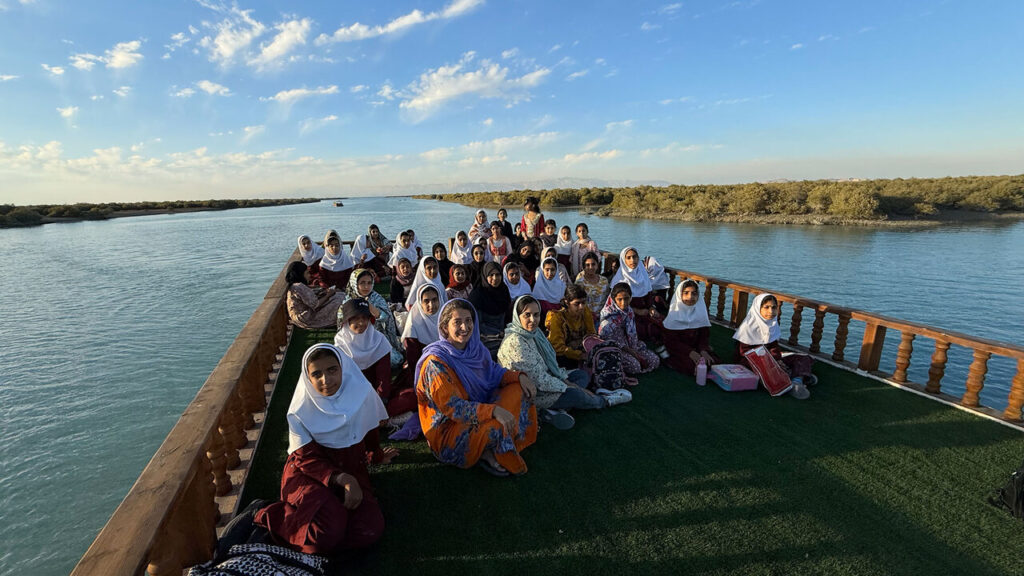Qeshm Island – As journalists focused on tourism and cultural heritage, my recent trip to Soheli village on Sun-kissed Qeshm Island in southern Iran felt like it was uncovering hidden gems that could be surprising.
The Soheri is located along the Persian Gulf, and is not just a coastal village. Rather, it is a living showcase of sustainable rural tourism, where nature, culture and community-driven developments come together in rare harmony.
First glimpse
Upon arriving at Soheri, we were presented with a vivid introduction, the vast blue spread of the Persian Gulf, the swaying mangroves of the Hara forest, and the warm smiles of their children.
But beyond its natural charm, I soon realized that a powerful story unfolds. It was a community-centric story. As our local guides underlined, the village had experienced some kind of environmentally friendly development. It was a collective effort by locals to securely place the village on Iran’s tourist map.
The ocean and culture are woven together
Every guest who steps into the Soheri is not only a tourist, but a temporary member of the living culture, and is gently guided to respect the land, sea and spirit of the place. What makes Soheri exceptions are interconnected tourism value chains, a rare model in rural Iran. Here, the ocean is not only a source of food, but also an adventure. Daily fishing expeditions, dolphin viewing tours and boat rides bring both livelihood and leisure into one ecosystem in the UNESCO-registered Haramangrove forest.
The freshly caught seafood finds a way to local restaurants and guesthouses. Visitors often come back from exploring mangroves and are treated to authentic, homemade Iranian cuisine.
From the sea to the table, tourism here is not an isolated industry, but rather a part of living and breathing in everyday life.
Ecotourism as a catalyst for growth
In recent years, due to a communal struggle of its residents, the village has witnessed an impressive boom in eco-lodging and hospitality infrastructure such as 41 rural guesthouses, 11 seafood restaurants, 130 motorboats for tours and fishing, 12 waterfront pavilions (alachiq), 6 traditional-shaped leisure ships (lenj), a local anthropology museum, and over 30 handicraft stores, run primarily by local women.
It was interesting that these advancements were not a result of top-down developments, but rather a movement of people who were deeply rooted in cultural conservation and environmental management.
Community-Driven Tourism Model
What stands out most in Soheri is the active participation of the local community, especially women and young people.
They were somehow evident from creating souvenirs and teaching eco tools to teaching tourists about the management of guesthouses and traditional lifestyles.
Even the tourist port of Soheri is managed by the village council of the village. This is economic empowerment, with village unemployment rates reaching zero.
The cultural spirit of Soheri
Beyond its economic narrative, Soheri is rich in cultural expression. For example, early in the morning of the second day of our trip, I saw the villagers push their camels into the sea and bathe! For them, it was just a routine, but for us, the tradition called Hammam Oshtran was an interesting experience.

A unique local dress, the aroma of traditional seafood stew boiled in a clay pot, and rhythmic songs resonate with the devotion of fishing at sunset. These are not tourist performances, they are genuine slices of life.
It is no surprise that Soheri is currently referred to as a gastronomic destination in the heart of Qeshm Island.

Tomorrow’s training
There is an undeniable ambition here. Young people are learning English, digital marketing and sustainable tourism management. Their eyes are set in the world, but their roots remain planted in the skullfish.
Very importantly, their efforts are supported by the QESHM Free Zone Organization on the one hand, by the Ministry of Cultural Heritage, Tourism and Handicrafts.
Save while in progress
Another concept imposed had a sense that Soheri was keenly aware of its ecological sensitivity. Development here is approached with caution. From using eco-friendly building materials to educating visitors on the conservation and biodiversity and conservation of delicate mangrove ecosystems, the village aims to grow without compromising its essence.
Every guest who steps into the Soheri is not merely a tourist, but a temporary member of the living culture, and is gently guided to respect the land, sea and spirit of the place.
Towards a sustainable future
The story of Soheri is not about popular tourism. It concerns a new vision of rural destinations in Iran. It’s a vision that balances ecology and economy, innovation and tradition, local identity and global access.
If this path continues to engage in community engagement, support policies and mindful investment, Soheli could become a global prototype for sustainable village tourism. And in doing so, it not only changes its own destiny, it inspires Iran and countless other villages.
morning

